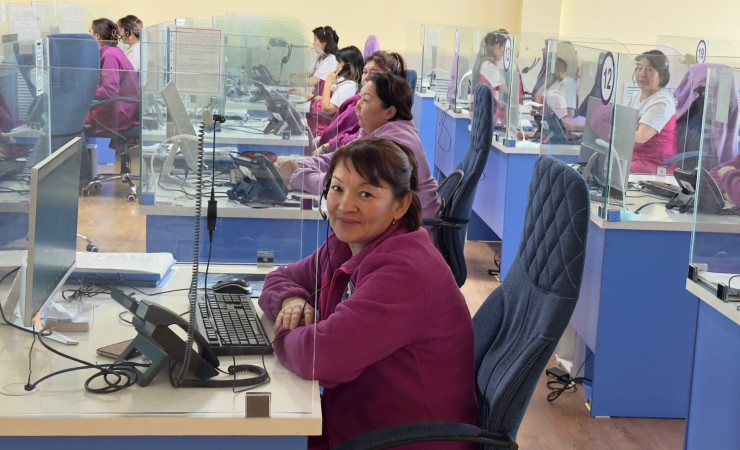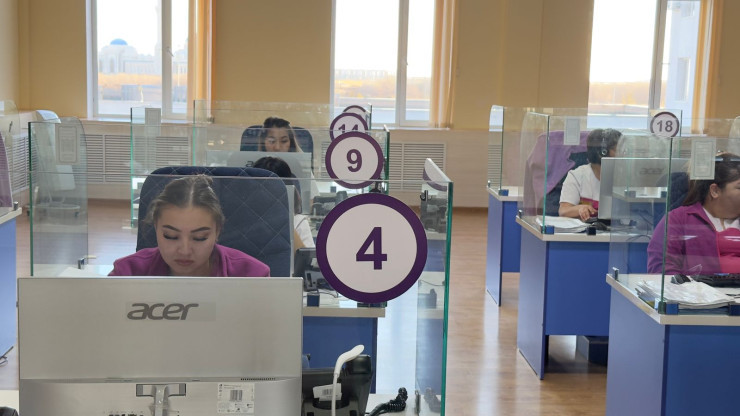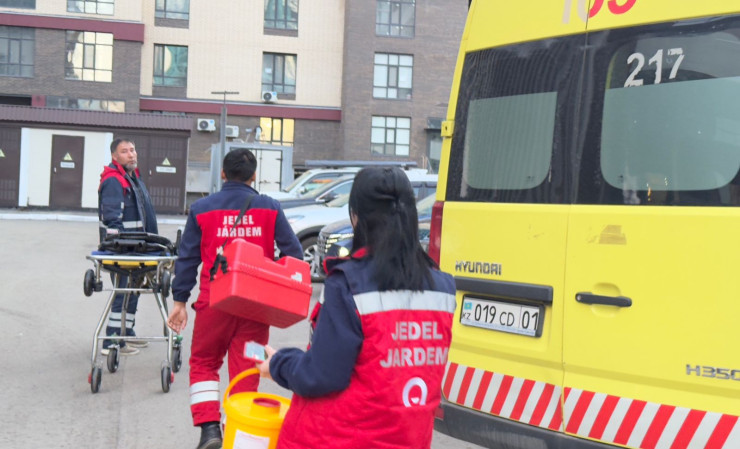Tengrinews.kz – "The ambulance service will no longer be able to serve all patients without exception around the clock." In the fall, this news thundered throughout the country. A Tengrinews.kz correspondent got acquainted with the work of the capital's ambulance station, where she learned how calls are distributed, why it is important to correctly communicate all the details to the dispatcher and what to do if help is needed immediately.
In September, a draft order was published on the Open legalacts portal, according to which ambulances will no longer be able to serve all patients without exception around the clock. Later, the Ministry of Healthcare had to clarify this document. The public discussion of the innovations was recently completed. However, they have not yet been approved. According to the new rules, patients of the 4th category of urgency will be able to call an ambulance from 08 AM to 8 PM on weekdays and on Saturdays. At other times, they will have to independently contact the emergency departments of medical organizations.
What do the call categories mean
Director of Astana City Ambulance Station Berkingali Nurdanat believes that the innovation will help improve the work of the ambulance service. And what's more, it will relieve the stations, which are now not only overwhelmed with calls, but also in dire need of new vehicles.
"In general, we have a positive attitude towards the innovations. Why? The current situation with ambulances in Astana is as follows. The station serves the first and third categories of calls. The fourth category should be served by clinics. But we also serve more than 50% now. We have signed an agreement with the clinics and serve the fourth category. But we sometimes have a shortage of cars. Accordingly, the implementation of this order will help us unload, especially during the day. That is, from 08 AM to 8 PM we will not serve the fourth category and will focus on the first, second and third categories - where there is a threat to life. And at night, when the clinic is closed, and on weekends, we will serve," Berkingali Nurdanat explained.
As explained by the head of the information and operational dispatch department of the Astana ambulance station, Sobir Narkulov, the four categories of urgency imply:
- the first and second categories are life-threatening conditions such as cardiac arrest, loss of consciousness, seizures, road accidents, strokes or heart attacks. The ambulance must arrive there within 10-15 minutes;
- the third category is conditions that require medical intervention, but are not life-threatening. For example, high temperature in children under 3 years old or isolated injuries;
- the fourth category is chronic diseases in the acute stage. These calls are more often transferred to clinics, but if there is a free team, then assistance is provided immediately.
"The most urgent calls are the first and second categories. We always try to ensure that they are serviced promptly. We can be held strictly accountable for being late for calls in these categories. But I can say with confidence that there are practically no such delays," Narkulov assured.
According to the director of the station, Berkingali Nurdanat, if you look at the statistics, then about 60% of calls per day are for the fourth category. Especially now, when outbreaks of seasonal colds are raging.
"In principle, the clinics can cope on their own. Well, and in the evening, we will be there. Therefore, we have a positive attitude to this innovation. I would like to note that we should soon receive new vehicles. We are expecting them in the coming days. To begin with, 12 ambulances will arrive. Somewhere by the end of November, we expect another 10 additional vehicles and by December 1 - another 25 vehicles," he added.
How the ambulance works: a look from the inside
 Photo ©️ Tengrinews.kz
Photo ©️ Tengrinews.kz
We managed to visit the "heart" of the ambulance station - where citizens are consulted, told how to provide first aid, and where 103 operators receive all calls.
The work of the ambulance is not only the departures of teams, but also a complex internal system of call coordination. In order to cover the entire city as much as possible, Astana has 14 ambulance bases, including four large substations, such as the Esil substation, where we headed. All of these points are located in such a way as to minimize the time it takes for teams to respond to a call.
 Photo ©️ Tengrinews.kz
Photo ©️ Tengrinews.kz
According to Sobir Narkulov, dispatchers receive up to 5 000 calls per day, but only about 1 800–2 000 of them require a medical team. Most of the calls are of the third and fourth urgency categories.
"It is important to understand that an ambulance is an emergency service. It is designed to save lives. And the fourth category, as a rule, is patients with chronic diseases who can be served in clinics," he noted.
How the dispatch service works
Two teams work simultaneously in the dispatch service: call reception dispatchers, who sort calls from the population and determine their urgency, as well as call transfer dispatchers, who distribute them between teams.
"Each dispatcher for call transfer is assigned to a specific district of the city or a polyclinic. For example, Almaty, Baikonyr or Esil districts. This allows us to minimize the time for call transfer and speeds up the arrival of the team," explained the head of the information and operational dispatch department.
Have you ever seen an ambulance turn around and change its route? It turned out that when it comes to the first or second categories of urgency, the call is transferred to the nearest free team. That is why teams can "change plans" suddenly on the road.
Who and how determines the urgency of a call
The urgency of a call is determined, of course, by the 103 dispatchers. That is why they ask leading questions to clarify the patient's condition.
"For example, if a person complains of abdominal pain, the dispatcher specifies: what kind of pain, when did it start, and after what? It could be either a regular pain or signs of an abdominal myocardial infarction, which often occurs in elderly women. Such details are very important," said Narkulov.
 Photo ©️ Tengrinews.kz
Photo ©️ Tengrinews.kz
Special attention is paid to children. Loss of consciousness, convulsions, breathing problems, or blue skin in a child always fall into the first category of urgency.
"Children are a priority for us. Even if the reason for the call does not sound critical, the team is sent immediately. We have clear instructions: an unconscious child, convulsions, drowning, or an accident are always the first category," said Sobir Narkulov.
If the patient's condition is life-threatening, the dispatcher puts the call on hold, staying on the line and helping until the medics arrive.
"We have been using this method since 2016, and it has already proven its effectiveness. For example, if a child is choking, the dispatcher can explain to the parents how to properly clear the airways so that the child can breathe," the station said.
"It turned out that the ‘child’ is a dog"
Sometimes the ambulance has to deal with unusual calls.
"There was a case when a woman reported that her child was choking and hung up. The team immediately left, but on the spot it turned out that the ‘child’ was a dog. Such cases, unfortunately, are not uncommon. Because of them, help can be delayed for those who really need it," the interlocutor of Tengrinews.kz shared.
How to properly call an ambulance
At the end of the conversation, we were given several tips to speed up the ambulance's arrival time and make the dispatchers' job easier.
"When you call an ambulance, it is important not to panic. Shouting or getting your words mixed up is a waste of time. Clearly state the address, describe the patient's condition. This will help the dispatcher correctly determine the urgency category and quickly send help," the head of department shared.
The city ambulance service is a system whose operation directly depends on the coordination of the actions of dispatchers, medical teams and the patients themselves.
"We constantly train dispatchers to be stress-resistant and communicate correctly with people. This is an important part of our work," added Sobir Narkulov.


